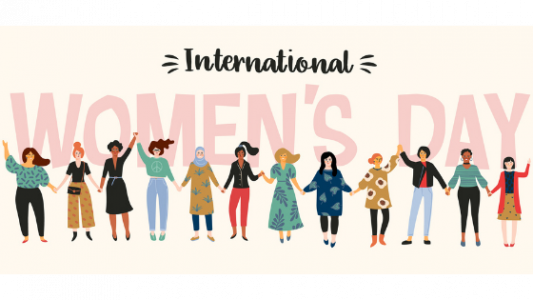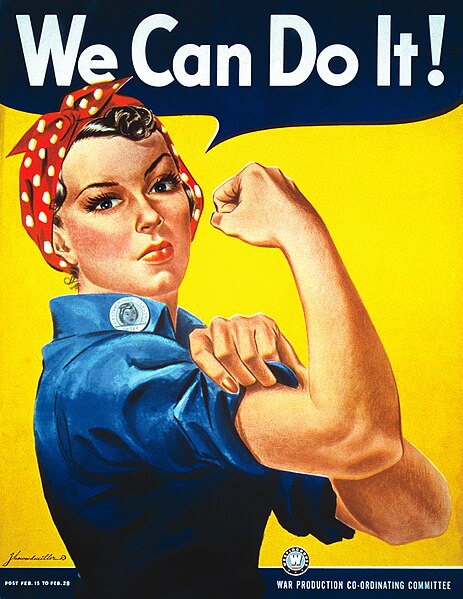
Each year on March 8th, the achievements and contributions of women are recognized around the world. In addition to this, the day serves as a time to reflect on gender parity and to raise awareness for women’s rights.
We wanted to take this opportunity to look back on the evolution of women’s roles in the workforce from the ratification of the 19th Amendment to present day. This list is by no means exhaustive, and there have been many developments for women in the United States prior to 1920. Our goal is to highlight the last 100+ years to show just how much has changed within a relatively short time and to reflect on the work that still needs to be done to achieve equal rights for women!
Through the 19th Amendment, women now have the right to vote. However, the fight for equality is far from over.

During the same year as the passing of the 19th Amendment, the Department of Labor created the Women’s Bureau. The focus included the welfare of women workers, the improvement of working conditions, and the creation of more career opportunities for women.
According to Newsweek, “more than 2 million women had been put out of work by the Great Depression.” Despite this staggering number, the impact of the Great Depression on women and people of color was unrecognized by both the government and much of the public, who primarily focused on white men in the workforce.
In a poll conducted by Fortune magazine, only 15% of people who responded believed married women should work full-time outside of the home.
Published in the Saturday Evening Post, Rosie the Riveter helped inspire women to take roles traditionally held by men to help with the war effort.

The share of women in the workforce expanded by 50% from 1940 to 1945 as they fill jobs while men served in the military.

In Goesaert v. Cleary, the Supreme Court upholds a Michigan law that prevents women from holding certain jobs under the rationale that this would help protect societal norms and morals.
Chaired by Eleanor Roosevelt, President John F. Kennedy created a special commission on the status of women. This commission issued a report two years after it’s founding, documenting widespread discrimination against women in the workforce and made specific recommendations for improvement.
Congress passes the Equal Pay for Equal Work Act. The law makes it illegal to make adjustments to wages on the basis of sex, race, religion, and ethnicity.
Congress passes the Civil Rights Act, forbidding discrimination on the basis of race, ethnicity, religion, and sex.

In Bowe v. Colgate-Palmolive, the Supreme Court rules that women who meet the physical requirements can work in many jobs that previously only men could hold.
The supreme court ruled that private employers cannot refuse to hire women who have preschool-age children.
Title IX of the Education Act states that educational programs receiving federal funds cannot discriminate on the basis of sex.
Katharine Graham is named CEO of The Washington Post, making her the first woman CEO of a Fortune 500 company. During her tenure, the newspaper published stories on the Watergate scandal.

Under the Pregnancy Discrimination Act, women cannot be fired or denied a job or a promotion because they are pregnant or may become pregnant. The law also stipulates that women cannot be forced to take maternity leave if they are willing and able to work.
Women received a higher number of bachelor’s degrees than men for the first time in U.S. history, helping them attain higher-paying careers.
With the passage of the Women’s Business Ownership Act (HR 5050), women no longer need to have a male co-signer on business loans. Female entrepreneurs have more access to capital to start finance their businesses.
The share of American women over 16 in the workforce hit 60.3%, marking a historical peak in participation
The Lilly Ledbetter Fair Pay Act overturned the Supreme Court decision in Ledbetter v. Goodyear Tire & Rubber Co., Inc., that workers had only 180 days from the date of their last paycheck to file a claim of wage discrimination against their employers. This allowed women and other workers who experienced wage discrimination to claim retroactive pay for previous paychecks.

Though women in the military often served in combat prior to 2013, the Pentagon officially rescinded a ban that prevented them from serving in combat roles.
Hillary Clinton became the first woman to earn the presidential nomination from a major party.

Jane Fraser became the first woman to lead a major U.S. bank, Citigroup.

Former Senator Kamala Harris becomes the first female, first black, and first Asian-American to be elected Vice President of the United States

Janet Yellen is confirmed in the Senate, becoming the first woman to serve as Treasury secretary.
Happy International Women’s Day!
© 2025 Oveana - A Santana Group Company. All Rights Reserved. San Antonio Website Design & Development - Backyard Studios.



